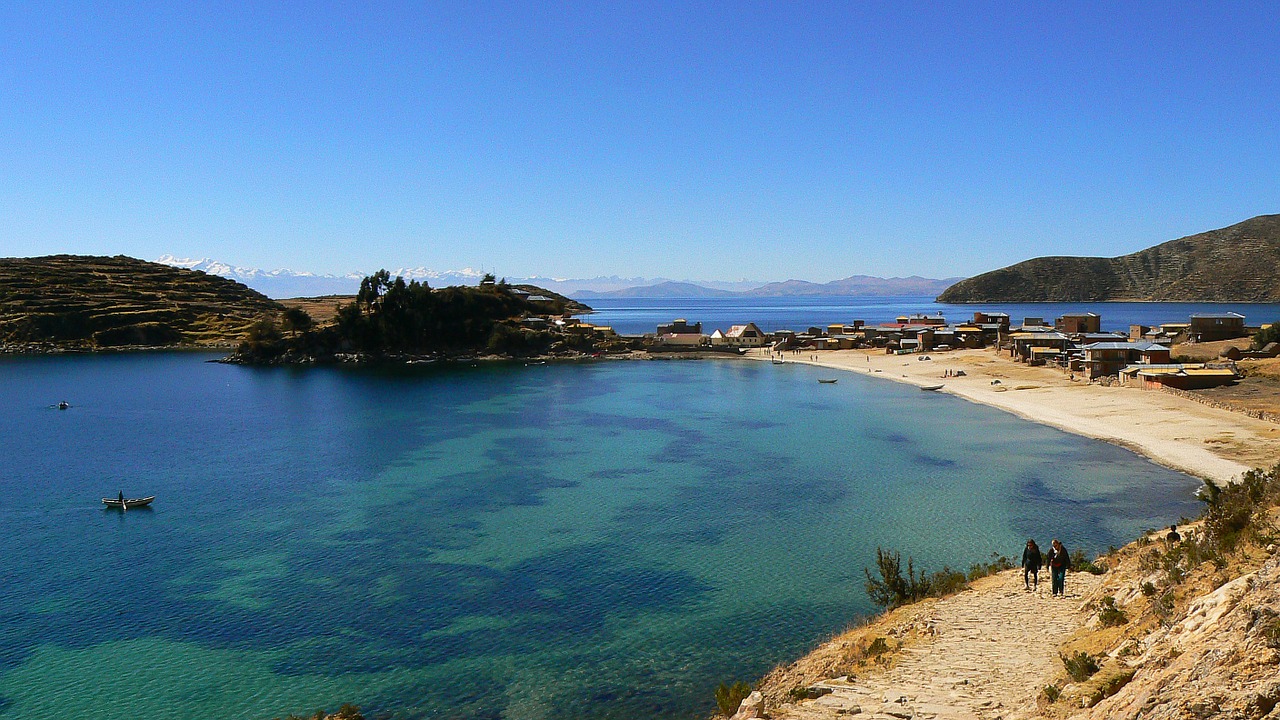
Planet Earth is filled with wondrous scenes and sceneries that will blow away your mind. From dazzling waterfalls to lush green plateaus, from white snows to deep oceans, every corner has something fantabulous to offer. No matter whichever direction you take, your eyes will be blessed with the natural beauty of this world. Lake Titicaca located in the East of Bolivia and close to Peru in South America is the highest navigable lake in the world. The scenic beauty of this lake is mesmerizing.
Geographical Revelations On Bolivia Lake Titicaca
The surface area of lake Titicaca comprises eight thousand three hundred and seventy square kilometers making it one of the largest. It stretches within a distance of one twenty miles and goes from the Northeaster direction to the South Eastern direction. Lake Titicaca measures about eighty kilometers in width and has a depth of one hundred and seven kilometers. As you go deeper, the lake keeps increasing its depth which goes far inside to as much as nine hundred and twenty feet. Some lake experts even say that it might be more than one thousand feet.
What Bolivia Lake Titicaca Holds More?
The islands surrounding Lake Titicaca are Amantani, Peru, Isla del sol, Isla de la suna and Bolivia itself. On the side of Peru are the famous islands of the Uros that are also a tourist attraction. In the local community, fishing and tourism plays a key role in contributing to the economy. This lake is known to have cold temperatures all throughout the year and it falls as low as one degree celsius.
Facts On Lake Titicaca For A Tourist
Lake Titicaca gets its name from titi khar ka which means a puma hunting a rabbit. It’s because the shape of the lake represents that and is called so by the local communities. Around this lake began the community of the Incan tribe that also calls it to be the birthplace of the Sun.
It is no surprise that Lake Titicaca has gained its popularity as the world’s largest navigable lake due to its high sea level and geographical location between Bolivia and Peru. It is surrounded by some forty islands that offer a good view of the lake for the tourists. Few islands which were earlier inhabited by the Incas have their ancient ruins and proof of the community that called this lake the birthplace of their Gods
Conclusion
In conclusion to the above read, another important point to be noted about this Lake is the deep Blue color that reflects the color of the sky. It houses over five hundred different species of biodiversity and is a collective of more than twenty five rivers and glaciers. Three communities that lived before the Incas are the Collas, Tiwanaku, and Pukara.





